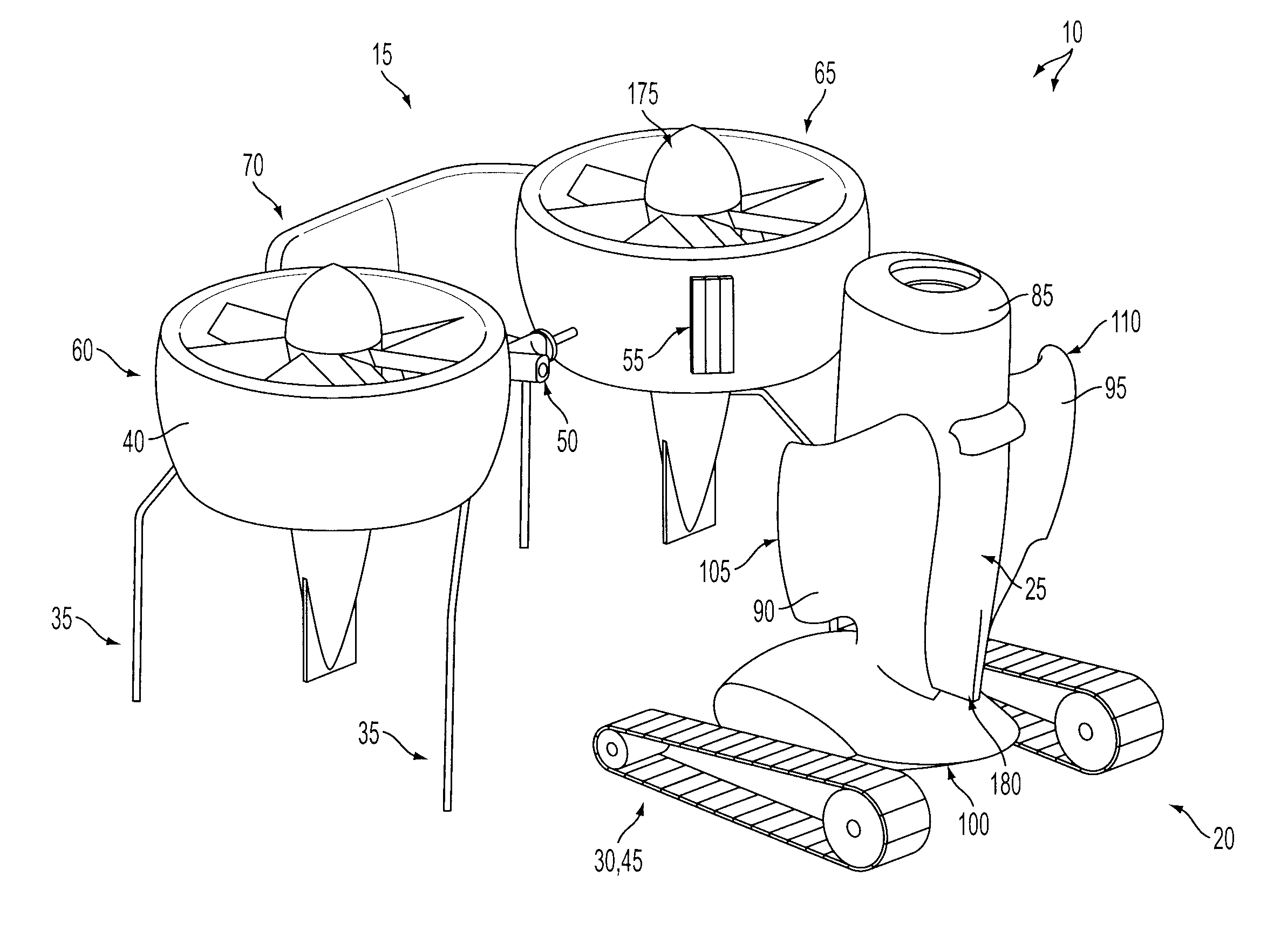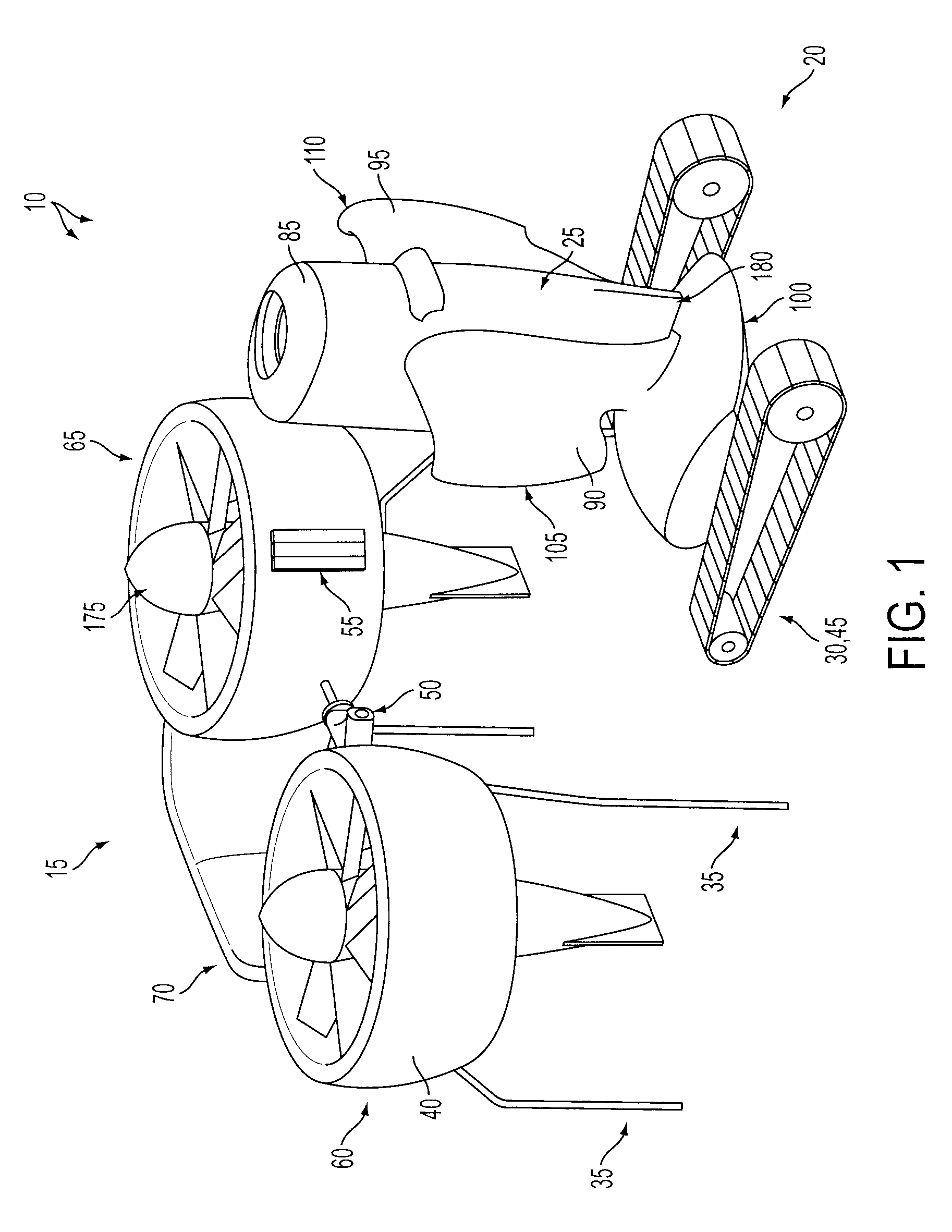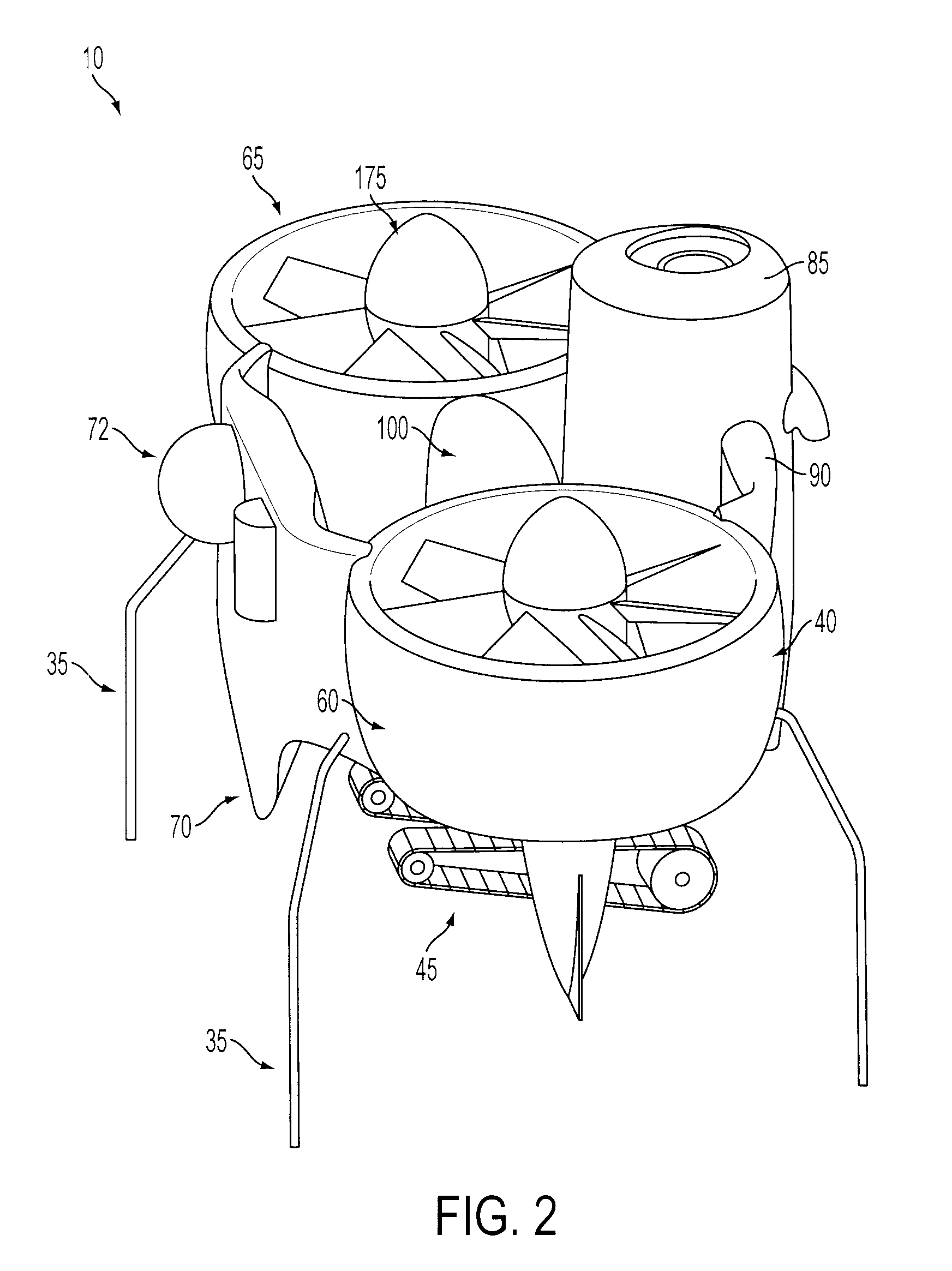Transforming unmanned aerial-to-ground vehicle
a technology of unmanned aerial vehicles and ground vehicles, applied in aircrafts, launch/towing gear, transportation and packaging, etc., can solve the problems of slow deployment to a threat, inability to repair itself without outside assistance, and inability to maneuver through irregular terrain irregularities, etc., to achieve the effect of rapid deployment of an unmanned ground vehicl
- Summary
- Abstract
- Description
- Claims
- Application Information
AI Technical Summary
Benefits of technology
Problems solved by technology
Method used
Image
Examples
Embodiment Construction
[0014]In one aspect, as shown in FIGS. 1-4 and 6, the present invention provides a transforming unmanned aerial-to-ground vehicle assembly 10 comprising: (a) an unmanned aerial vehicle 15 integrated with an unmanned ground vehicle 20, (b) a power unit 25 shared by the unmanned aerial vehicle 15 and the unmanned ground vehicle 20, (c) vehicle controls shared by the unmanned aerial vehicle 15 and the unmanned ground vehicle 20, (d) a disengagement mechanism 30 to separate the unmanned ground vehicle 20 from the unmanned aerial vehicle 15, (e) one or more manipulator arms 140 located on either the unmanned aerial vehicle 15 or the unmanned ground vehicle 20, and (f) landing gear 35.
[0015]As used herein, an unmanned aerial vehicle (UAV) 15 may comprise single ducted fan (Not Shown), double ducted fan (FIGS. 1-4), or multi-ducted fan assemblies, one or more helicopter assemblies, or any other vertical takeoff and landing vehicle known in the art. In a dual ducted fan embodiment, the fans...
PUM
 Login to View More
Login to View More Abstract
Description
Claims
Application Information
 Login to View More
Login to View More - R&D
- Intellectual Property
- Life Sciences
- Materials
- Tech Scout
- Unparalleled Data Quality
- Higher Quality Content
- 60% Fewer Hallucinations
Browse by: Latest US Patents, China's latest patents, Technical Efficacy Thesaurus, Application Domain, Technology Topic, Popular Technical Reports.
© 2025 PatSnap. All rights reserved.Legal|Privacy policy|Modern Slavery Act Transparency Statement|Sitemap|About US| Contact US: help@patsnap.com



